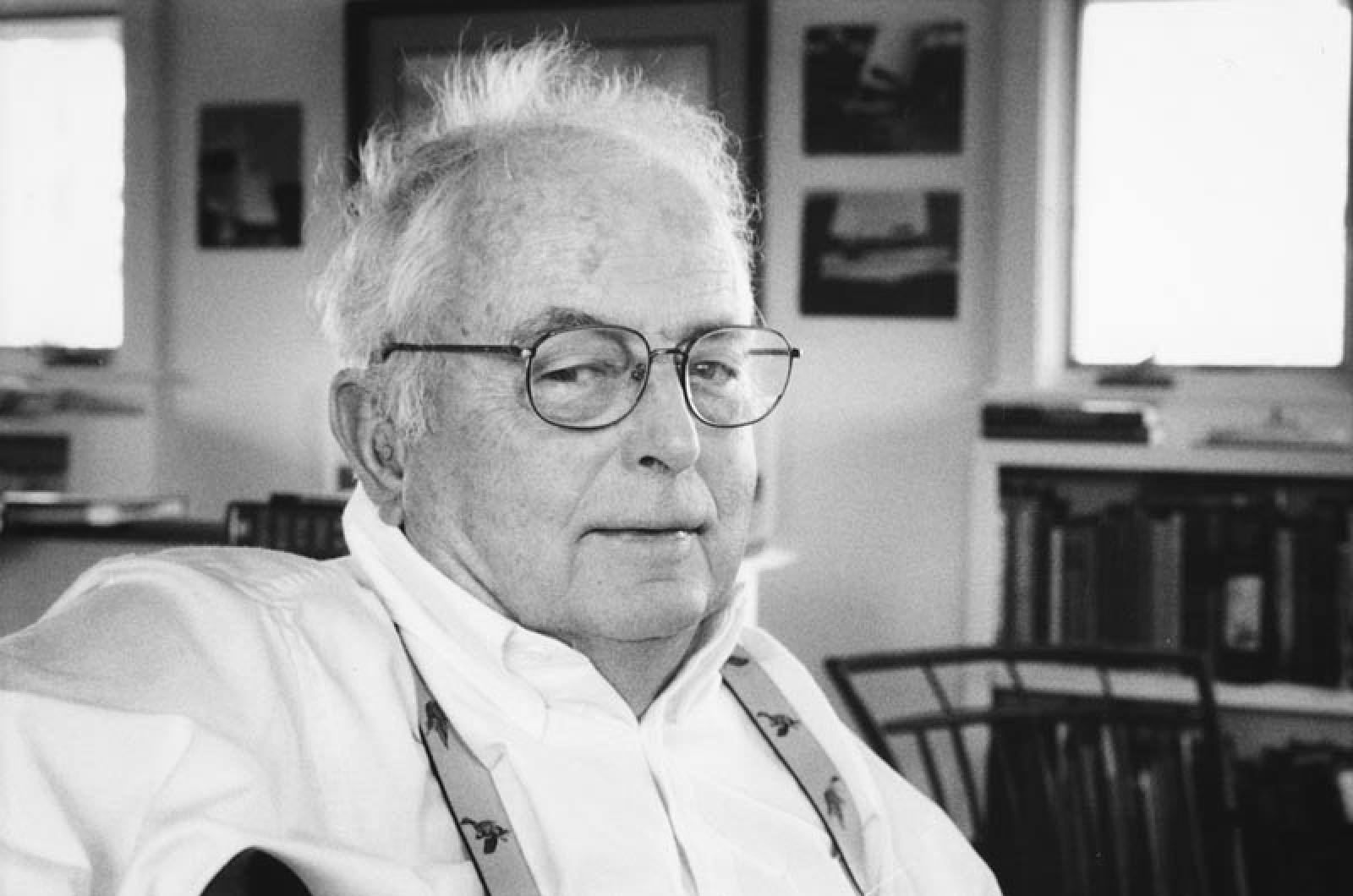No one ever walked away from a conversa tion with Tom Hale and said: “I wonder what he wanted to tell me”? Tom embraced life in all its complexity, passionately and fully. He cared deeply about the world around him, its past, its present and especially its future. Just listing his many identities is exhausting to a mere mortal: war veteran, architect, curator, maritime historian, lecturer, sailor, shipyard owner, boat designer, boat builder, model builder, harbor master, conservationist, artist, writer, board member, husband, father, cook — and I know I’ve left some things out, but citizen is a good place to end.
His personality was contradictory — he was sensitive and kind, and also volatile and had a temper — but he was always true to the things that were important to him and he was never, ever boring. He was a great friend and ally, a passionate, effective advocate and a formidable adversary.
I first met Tom when I was about 12 years old and he became an assistant curator to my father at Mystic Seaport. Little did I know then that it would be the beginning of a more-than 50-year relationship where, because of the Vineyard and shared interests, our paths would overlap time and time again. I thought him very old when we met, but he became increasingly younger through the years that followed.
History meant a great deal to Tom, both his own family’s and maritime history, and it inspired him in both his model building and his writing of maritime fiction. He was proud of his heritage which he researched and knew well. He also cared about art and was a talented artist. His pen and ink drawings of Vineyard lighthouses and those he visited in his sailing travels grace several publications. They were often featured on the much-anticipated Martha’s Vineyard Shipyard Christmas cards, or his personal cards, along with wonderful written descriptions. Equally stunning were the botanical pen and ink renderings he produced, inspired by his late wife Anne’s great passion for and knowledge of horticulture.
He had an impish sense of humor as exemplified by the story he liked to tell about the boat owner who called the shipyard to check on how his boat was, to which Tom replied: “It’s fine — I can still see the top of the mast sticking out of the water.” Oh, no, the owner said — did it sink? “No,” Tom deadpanned, “that’s how we put out the fire.”
We first reconnected on the Vineyard Haven harbor during my years working on the schooner Shenandoah in the late 1960s, and when my wife Martha and I owned and operated our charter schooner MYA in the 1970s. During those years there were numerous conversations about ships, maritime history and harbor issues. After moving to the Island year-round in 1981, I grew to know Tom better as we worked together on projects like the Island Life Campaign for the hospital when Tom and his great friend Walter Cronkite played leadership roles, as they did at Sail Martha’s Vineyard. As a conservationist with a keen interest in horticulture, due to his wife’s life work, he was extremely supportive of my work with David and Joan Smith in establishing the Polly Hill Arboretum. And he was indeed a star to steer by during my years as executive director at the Martha’s Vineyard Museum. Finally, he was especially excited when I returned to Mystic Seaport to be part of the team restoring his beloved whaleship, the Charles W. Morgan, a ship he knew before she came to Mystic.
Like most of his generation, Tom Hale’s life was forever changed by World War II, when he served as an ambulance driver in Europe and in Africa. While teaching American history during the 1970s at the Dana Hall School in Wellesley, I often used Tom’s written description about his experience as part of a group that liberated a German concentration camp that was published multiple times in the Gazette around Veterans Day or Memorial Day ceremonies. He wrote it not to bring attention to himself, but rather to do all he could to insure that we on the Vineyard and as a nation never forgot what happened there.
Tom was fully committed to everything he did. He had no governor and always went full speed ahead, many times in multiple areas simultaneously. Some of what he accomplished is visible — the models of the ferries he made for the Steamship Authority that are on many of the vessels, the murals of the bustling and extensive boat building activity on the Vineyard Haven waterfront during World War II that he donated to the Tisbury School, the beautiful Vineyard Vixen sailing vessels, and the Wasque launches he designed and built. But his other accomplishments — work on various boards and organizations he gave so much of himself to, and the political causes, both local and national, that he supported — are the unsung side of Tom Hale that gave a strong backbone to so many Vineyard institutions and causes. He was a participant, not a spectator in the world around him, not because he wanted attention but because he wanted to make a difference. And he did.
When I told a mutual friend about Tom’s death, he said “The Island owes him a warm farewell.” I agree. As he sails off over the bar on this last voyage, I bid him the traditional sailor’s fair winds and following seas, along with deepest thanks for the support he gave me during hard times, for the constant inspiration and for setting an example of how to make a difference.
While I miss him already, I’m certain heaven just got a lot busier and is going to have more boats.
A longtime Vineyard resident and sailor, Matthew Stackpole currently works as a major gifts officer and ship’s historian for the Charles W. Morgan Restoration project at Mystic Seaport.




Comments
Comment policy »